Commonly Asked Questions About Treatment
FAQs
Answers to Your Common Questions About Treatment
Start Getting Answers...
Frequently Asked Questions
We’re sure you have many questions about seeking treatment for drug & alcohol addiction. Check out our frequently asked questions and find out how The Good Life Treatment Center can help you discover your own individual path to long-term recovery.
We place an emphasis on clinical care, evidence-based practices, wellness activities, and 12-step involvement. You should choose the Good Life because we’re 100% invested in you or your loved one’s complete recovery. We’re sober ourselves and we know what a living hell addiction is for everyone involved. We’ve been there and found a way out. We’ll show you or your loved one that way with dignity and respect.
Our incorporation of wellness activities and our personal touch to addiction recovery makes our program special.
While the Affordable Care Act mandated substance abuse and mental health coverage and parity, it isn’t guaranteed that your insurance will cover the entire cost of treatment. Insurance may cover some of the cost, it may cover all, or it may cover none. The only way to be sure if to verify the scope of your coverage.
Unfortunately, there’s not a one-size-fits-all answer. You need treatment when you need it. Sometimes it’s when you face consequences like financial disaster, a car crash, an arrest, or an overdose. Sometimes it’s when you face emotional, mental, or spiritual bankruptcy. Sometimes it’s none of the above. A good rule of thumb is to try the following test to see if you or someone you know needs treatment: Try to stop using completely* for a month. If you can’t, then seeking professional help is a smart idea. *Certain substances produce physical dependence that can be incredibly uncomfortable, or even fatal, if stopped abruptly. These include alcohol, benzodiazepines, and opioids. Don’t stop abruptly if you’re taking these. Call your doctor to discuss your options.
Have you ever tried to contact your loved one in treatment, or to get some information about their progress, and ended up hearing some variation of the phrase “I can neither confirm nor deny that person is here?” If so, you’ve already experienced the impact of HIPAA. HIPAA stands for the Health Insurance Portability and Accountability Act (of 1996). It’s a piece of legislation that provides privacy and security for patient medical information. This means that your loved one needs to sign certain releases of information before any clinicians, doctors, or recovery professionals can talk to you about them. It’s an often annoying part of the treatment experience, but it does protect both you and your loved one’s medical records.
Much like what happens during treatment, the answer to this question depends largely on what you or your loved one do after treatment. You can continue through the continuum of care. You can go to a sober living residence. You can go to 12-step meetings. You can do none of the above. It’s all up to you. We recommend a period of around 90 days of sustained focus on your personal recovery. Some of this occurs in primary treatment, some in step down care, and some in a halfway house. The important thing is to set aside as many obligations as you can (ideally all of them) and focus on nothing but getting and staying sober.
It’s unfortunate, but relapse is often a part of recovery. This isn’t always the case, but the disease of addiction has about the same relapse rate as other diseases (anywhere from 30% to 50% or higher, depending on who you ask). It’s important to remember that even if you or your loved one do relapse, it isn’t the end of the world. As people in long-term recovery ourselves, we’ve lived through relapses. They’re unfortunate and potentially fatal, but remember that anyone can get sober at any time. There’s a recovery saying that goes “no matter how far down the scale we have gone…” Applying this to relapse, no matter how many times you’ve relapsed, recovery is possible and within your reach.
The 12-steps have been around since the 1930s and the principles they represent — honesty, open mindedness, service to others, fearless self-searching, restitution for past wrongs, and more — have been around for much longer. These principles serve as a blueprint for recovering addicts to build their new lives on. The people in 12-step fellowships serve not only as confidants and a support system, but as architects who help those in early recovery construct new lives. It’s important to mention that the 12-step model of recovery isn’t the only one, nor is it required for you or your loved one to believe in it. It’s simply a force of good that you can use if you want.
Prices vary from program to program and prices even vary within individual programs depending on your level of care and the scope of tertiary services. A general ballpark is between $5,000 and $20,000 for a month of care. Sufficiently stressed out about the cost of treatment? Don’t be! Most rehabs, including us here at The Good Life Treatment Center, aren’t in this business to get rich. We want to help people and offer numerous payment plans and options to fit any budget.
Different types of treatment include: Individual addiction therapy with a specially trained therapist; Group addiction therapy; 12-step support groups that aren’t professionally associated with any public or private organizations ;Outpatient (OP) – A mix of individual and group therapy that usually meets once each week for a couple of hours; Intensive outpatient (IOP) – A mix of individual and group therapy that usually meets three times each week for several hours; Partial hospitalization program (PHP) – Sometimes called day/night treatment, this is a mix of individual and group therapy that usually meets five days a week for 5-8 hours; Inpatient or residential treatment – Most people’s idea of rehab, this consists of around a month of living in a treatment facility and engaging in groups, one-on-one therapy, and other recovery activities during the day and night; Long-term inpatient – This is an extended version of inpatient which lasts for longer than a month; Florida-model inpatient – This is a type of residential treatment that pairs structured community living with all of the above programs to help clients develop life skills in addition to personal recovery.
We firmly believe in addressing the family aspect of recovery here at the Good Life. After all, addiction affects the entire family — shouldn’t treatment and recovery do the same? It’s important to remember that, regardless of whether the treatment center your loved one goes to has a family program, you need to take care of yourself! Your friend or family member is embarking on a journey of discovery and healing. You should do the same!
We absolutely do. We’re licensed by the State of Florida and the Florida Department of Children and Families, which require us to have the highest quality medical care available for our clients. Not only that, but we take pride in what we do. We’ve gone above and beyond by finding the best doctors and clinicians to incorporate into our program. Head over to our staff page to learn more about the incredible treatment team we’ve assembled!
Generally speaking, treatment’s pretty expensive. It’s important to remember a few things before you start worrying about the price of treatment though. First, there are many affordable and free options. There are federal and state-run facilities that vary in the quality of their programs. Second, many treatment centers accept major commercial insurance, like ours at The Good Life Treatment Center.
South Florida’s often cited as the recovery capital of the United States and, by default, of the world… but why? There’s not a single answer. It’s a mix of several factors, including the beautiful weather, the relaxing atmosphere, the state laws, and the vibrant community of men and women in long-term recovery. These all make South Florida an attractive location for treatment centers.
We absolutely do. We’re licensed by the State of Florida and the Florida Department of Children and Families, which require us to have the highest quality medical care available for our clients. Not only that, but we take pride in what we do. We’ve gone above and beyond by finding the best doctors and clinicians to incorporate into our program. Head over to our staff page to learn more about the incredible treatment team we’ve assembled!
The world of sober living’s a lot to take in, we know. The good news is that it isn’t as complicated as it seems at first. At its most basic, sober living offers the same experience regardless of the particular name it might take on — a living space that’s conditional upon your sobriety and that’s free of drugs or alcohol. Most sober living residences have other rules, but sobriety is the hard and fast one that can’t be broken. For example, halfway houses usually don’t allow the opposite sex of their residents to visit, while ¾ houses do. Sober living residences may also be associated with particular treatment centers, though this isn’t always the case. We’re proud to offer community living at The Good Life Treatment Center as a form of sober living residence for clients in all stages of their recovery. Finally, it’s important to note that certain names for sober living residences have different meanings across the country. In the Northeast, for example, “halfway house” means a sober living house with some sort of therapy component. In South Florida, halfway house simply means a house where people in early recovery live.
Making Recovery Affordable
We Work With Most Major Insurance Plans
We work hard to make addiction treatment in Palm Beach County at The Good Life Treatment Center accessible and affordable. We work with most major insurance carriers to help cover many of the costs associated with treatment. Don’t worry if you don’t see your insurance listed below. Give us a call at (561) 250-8552 to learn more about your personal options for treatment.








Stories of Hope in Addiction Recovery
What Our Clients Say
With an average rating of 4.8 on Google from over 115+ reviews, The Good Life Treatment Center is your top choice for drug & alcohol addiction treatment in Palm Beach, FL.
